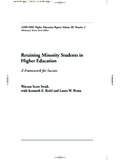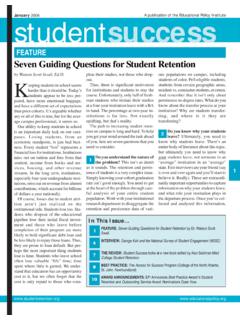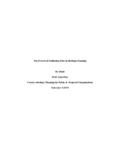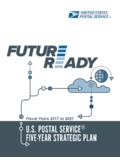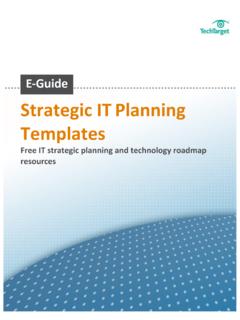Transcription of A Practical Guide to Strategic Enrollment Management …
1 Practical Guide to Strategic Enrollment Management planning WilkinsonPitt sburg State UniversityJames S. TaylorUniversity of Aveiro& Center for Research in Higher Educati on Policies, PortugalAng Peterson, University of Central FloridaMaria de Lourdes Machado-TaylorCenter for Research in Higher Educati on Policies, Portugal A Practical Guide to Strategic Enrollment Management planning in Higher Education By Wilkinson Director of Analysis, planning and Assessment Pittsburg State University and Senior Research Scholar Educational Policy Institute Virginia Beach, VA James S. Taylor Professor of Higher Education Management University of Aveiro, and Senior Research Associate Center for Research in Higher Education Policies Portugal Ang Peterson, Assistant Vice President Transfer Admission, Enrollment Services and Marketing UCF Regional Campuses University of Central Florida Maria de Lourdes Machado Taylor Senior Research Associate Center for Research in Higher Education Policies Portugal November 2007 Strategic Enrollment Management A Guidebook Educational Policy Institute 2 TABLE OF CONTENTS Preface.
2 4 Chapter I .. 6 Introduction .. 6 Purpose of this Guide .. 10 Background .. 11 Why Strategic planning ? .. 12 Organization of What Follows .. 14 Chapter II .. 15 An Applied planning Model .. 15 Some General Concepts .. 15 A Strategic planning Model .. 16 Critical Components .. 16 The Model .. 19 Chapter III .. 24 The Plan to Plan .. 24 Step 1: Gaining Institutional Support .. 24 Step 2: Involvement and Forming the planning Committee .. 24 Step 3: Designing the planning Process .. 25 Step 4: Setting Timeframes .. 26 Step 5: Resource Commitment .. 26 Chapter IV .. 28 The Institutional 28 Step 6: Identifying All Formal Requirements .. 28 Step 7: Informal Expectations .. 29 Step 8: Philosophical Underpinnings .. 30 Step 9: Institutional Mission Statement .. 34 Chapter V .. 38 Who We Are and What Our Environment 38 Step 10: Strengths and Weaknesses.
3 39 Step 11: Opportunities and Threats .. 44 Chapter VI .. 48 Where We Want to Go .. 48 Strategic Enrollment Management A Guidebook Educational Policy Institute 3 Step 12: Developing a Vision Statement .. 48 Step 13: Strategic Goals .. 50 Step 14: Campus Consensus of the Plan .. 61 Step 15: planning Committee Revisits the Plan .. 61 Chapter VII .. 62 Integrating Strategic planning , Budgeting and Decision Making .. 62 Step 16: Operational planning .. 62 References .. 65 Worksheets .. 67 Strategic Enrollment Management A Guidebook Educational Policy Institute 4 About the Educational Policy Institute The Educational Policy Institute (EPI) is an international, non profit think tank dedicated to the study of educational opportunity. Our mission is to provide high level research and analysis to support policymakers and practitioners and expand educational opportunity to all students.
4 EPI was incorporated as a non profit organization in 2002 and has operated as such for the past five years. EPI was created to fulfill a need for more rigorous educational research and to create better linkages between research and public policy communities. EPI is headquartered in Virginia Beach, Virginia, with satellite offices in Toronto, Ontario, and Melbourne, Australia. Strategic Enrollment Management A Guidebook Educational Policy Institute 5 Preface Over the past decade, Strategic Enrollment Management (SEM) has become a major force in the organization and practice of higher education. With limited financial resources for financial aid, institutions must balance the need to attract and admit a freshman class that fits well with the institution and also provide the necessary financial support to allow for diversity in student body.
5 This is not a simple task. Because of this complex mission, institutions have become very focused on improving Enrollment Management strategies to maximize the resources of the institution. New software programs have helped make SEM more of a science than ever before, but our experience is also suggesting that learning to know the institution in a Strategic manner is perhaps the most important factor in balancing the various forces on the institution. As the authors of this Guide state in the opening paragraph, SEM focuses on what is best for students and how to ensure their success while addressing all aspects of the institution s mission. This is a critical point. Many institutions are perhaps using SEM for the wrong reasons; to maximize their ability to bring in the best students, without consideration of diversity and other important issues that make a campus great.
6 It is our hope, through this Guide , that institutions will take the time to understand the greater good of higher education and understand that they can, with careful study, have it all with respect to Strategic Enrollment practices. They can do both good and well at the same time. Bob Wilkinson, a senior scholar of the Educational Policy Institute, along with the late Jim Taylor, Ang Peterson, and Maria de Lourdes Machado Taylor have pulled together an exceptional guidebook for institutional practitioners and Enrollment managers. We hope that the readers of this Guide will put it to good use. Regards, Dr. Watson Scott Swail President, Educational Policy Institute Strategic Enrollment Management A Guidebook Educational Policy Institute 6 Chapter I Introduction Strategic Enrollment Management (SEM) is an institution wide responsibility and the central focus of the institution s overall Strategic plan.
7 SEM focuses on what is best for students and how to ensure their success while addressing all aspects of the institution s mission. Just like overall Strategic planning , Strategic Enrollment Management starts with the institution s mission. This will serve as the beginning and end of the focus for this Strategic Enrollment Management planning Guide . According to Black (2001) and Henderson (2005) SEM has moved through several stages of development. The period between the 1970 s and mid 1980 s can be labeled the Age of Recruitment. This was the beginning of SEM. The focus was on increasing Enrollment through the development of enhanced recruiting models and the use of financial aid packaging and leveraging. The Age of Structure started in the mid 1980 s and continued through 2005 (actually, the Age of Structure is still alive and well).
8 The focus of this age was on increasing Enrollment through enhanced recruiting models and the use of financial aid packaging and leveraging. However, the SEM organizational structure becomes the focal point for implementation. It is during this age that we see the evolution of the Enrollment Management division and all the various organizational structures that basically redefined the division of student affairs by carving out selected functions and grouping them together in this new SEM division. The Age of the Academic Context started in 2005 with Stan Henderson s article Refocusing Enrollment Management : Losing Structure and Finding the Academic Context. It is in this age that SEM branched out to include the academic side of the institution. So far, this age has focused on developing and refining the SEM organizational structure and integrating SEM models while being encouraged to reach out to the academic division as SEM partners.
9 The focus is still on increasing Enrollment through enhanced recruiting models and the use of financial aid packaging and leveraging coupled with establishing a SEM organizational structure within the institution but there is now recognition that academics are important to the overall viability of the process. Based on this evolution and the current state of SEM, there appears to be a set of core SEM principles that Guide all current SEM activity: Establishing clear Enrollment goals; Promoting student success; Strategic Enrollment Management A Guidebook Educational Policy Institute 7 Determining, achieving and maintaining optimum Enrollment ; Enabling the delivery of effective academic programs; Generating tuition; Enabling financial planning ; Increasing organizational efficiency and; Improving service levels.
10 However, there are some major institutional gaps caused by the core concepts. As currently practiced, there does not seem to a an overriding definition of SEM nor does there seem to be any way to breach the divisional divide or to bring focus to the broader concept of student success. The primary focus has been on simply increasing Enrollment so as to increase and stabilize institutional revenues. Student success is defined as the institution s retention and graduation rate, which does not address many of the reasons students attend post secondary education. This means that students are recruited based on their probability of graduating the student profile. Utilizing extensive institutional specific research, institutions develop a profile of the successful student (the academic and non academic characteristics of the successful student) and then recruit students that fit that profile.
